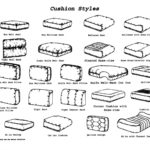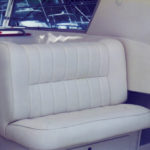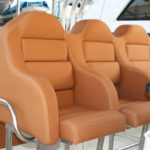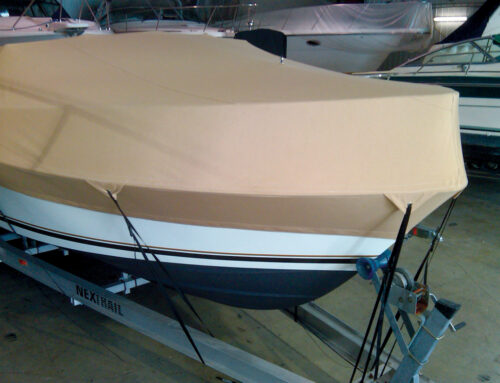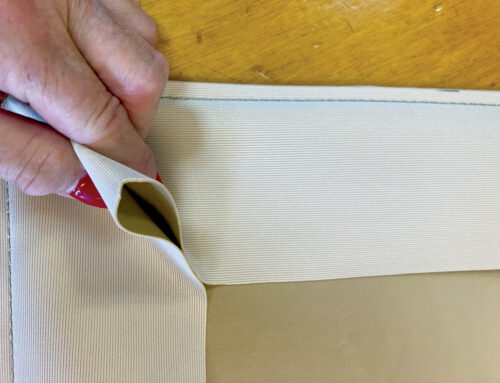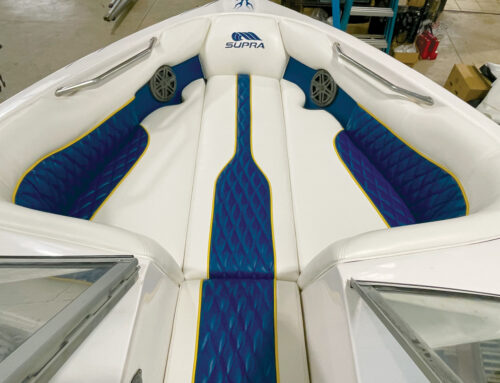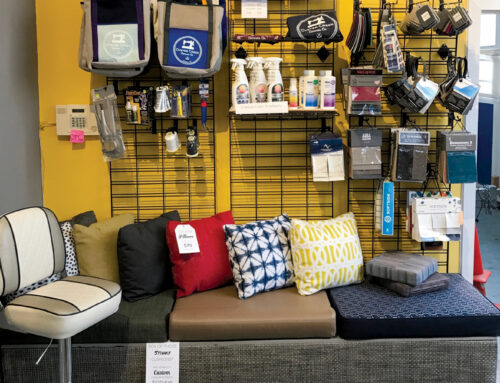Learn to talk the talk, then walk the walk
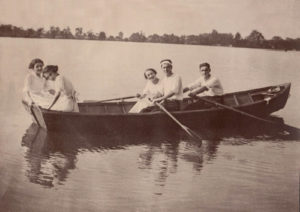
Photo 1: From left: The author’s grandmother, Elizabeth “Nana” Granewitsch, sisters Abigail Granewitsch and Henrietta Granewitsch, and rowing companions Frank Felkner and Robert Bruce Crisswell.
Whether these are your early years as a fabricator or you are a seasoned “salty dog,” we all are walking a road with a unique language and set of skills. It’s fun to say “boating has been in my family for close to 100 years,” yet other than always having a passion for the water, it was not until July 1995 that I moved to San Juan, Puerto Rico, with the opportunity to manage a sail loft and utilize sewing skills fabricating the random cushion requests that came into the shop.
For newcomers to the Marine Fabricators Association (MFA) and boating, the first step is to learn the language to talk the talk. Reach out to fellow fabricators when you have a question or need assistance to walk the walk.
For example, I had read about “scrim foam” in a Marine Fabricator article featuring cushion construction. During a hurricane, I used the down time to call the author, who was happy to discuss the features of scrim foam. It can be anywhere from 1/16 to 1/4 inch thick and is used as a backing foam under fabrics, leather and vinyl to add padding and shape (photo 2). It can be cut, glued, stitched and used in multiple layers to achieve a desired thickness or as a final padding layer over firmer foundation layers of foam. Check with your suppliers, as they can also pre-glue foam to vinyl for wall and headliner applications.
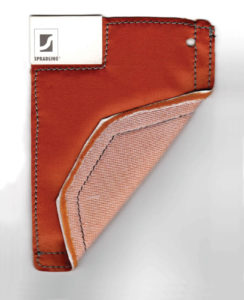
Photo 2
Give it a try for a polished seating look, especially when sewing channel sections in boat seat cushions. The rectangular areas of the aft seating (photos 3 & 4) offer a good example of scrim foam pre-stitched to the underneath sections of vinyl before the pieces are joined side by side for the center of the cushion.
Then the seat center is stitched to the front knee rollover band and the seatback center is stitched to the top rollover band, followed by the side bands to join cushion fronts and backs. The technique can be utilized on a basic seat cushion with only two or three top sections until you are more comfortable with your skill level to sew cushions similar to the custom cushions fabricated to fit the aft seating area for this Viking 68-footer.
As a new MFA member, I learned there are fabricators who specialize in exteriors, yet they would not venture to fabricate a cushion. There are fabricators who specialize only in intricate interiors; then there are those that offer expertise in both fields. Everyone is more than willing to share and help problem solve any situation you might encounter. Numerous vendors attend seminars and workshops; they offer marine materials that have exploded in design and durability as technology has advanced. For example, expanded vinyl with two-way stretch is now available, and there also is four-way stretch for jet skis and motorcycles. And there’s “cheap and cheerful” cushion covers that can be wrapped and stapled to a base without stitched side bands as seen on the pedicycle cushions (photo 5).
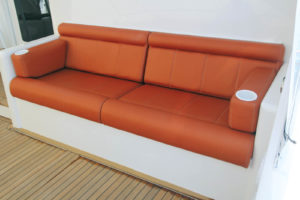
Photo 3
I recall with fascination reading suppliers’ catalogs like the palm of my hand. A project for a saloon and two cabins came in with “free rein” to re-cover all the cushions. Foam with angles was so new I had no idea which way was up or down. Fortunately, time was not a factor; in hindsight, the project that took more than a month then would now take only a few days. The project provided the perfect baby steps we’ve all taken. It was exciting, and I began to view all the boats in the bay as future opportunities. Wherever you are, take the opportunity to look around for hidden possibilities.
It was during a phone call to a supplier that I learned about the MFA, and ironically a Bainbridge salesperson (who is now head of Serge Ferrari USA) passed by my shop in 1997 and mentioned the importance of attending the MFA National Convention. This was the only familiar name or face I recognized when I attended my first MFA convention. Yet I returned to Puerto Rico with a foundation of friendship and direct access to suppliers that I treasure to this day.
After finishing some of my early interior projects, I developed a chart (photo 6) with illustrations of cushion styles after some verbal confusion transpired in an attempt to decipher a customer’s request for exterior and interior “airplane-style” seating for an Italian Riva.
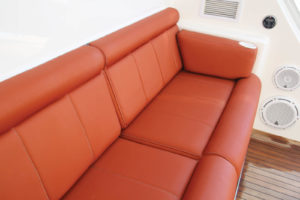
Photo 4
A visual reference cuts to the chase and having the variety of illustrations shown here should be useful in your shop.
Until now, there has only been one project with more complexity than the helm seating encountered on the Riva. A sail loft I managed offered mostly exterior Sunbrella fabric, clear vinyl and sailcloth.
Honesty with the boat owner was the best policy and somehow he trusted me to complete the job in less than a month.
Clearly, I had a lot of research to do, as I actually didn’t know the difference between the kind of vinyl used for tarps and covers and “expanded” vinyl. Ironically, in a recent discussion with a local decorator, she was appreciative to learn that expanded vinyl is used for seating cushions as expanded vinyl returns to its original shape. I cringe to think that I almost didn’t use an expanded vinyl on the Riva cushions
The request for “airplane-style” seating was totally new and required skill to make interior sections for this style of cushion. In a future column, I will expand on how I learned to construct a cushion with interior sections to create hi-lo seating. Above right are two images for pilot seating: on the Riva (photo 7), which I fabricated as a novice, and the Hydra-Sport (photo 8), which utilized skills (including using scrim foam) developed along the path of earning a Master Fabric Craftsman certification.
Fortunately now there are software applications and digital cameras to assist fabricators so that all information is obtained while in the field. This avoids extra site visits and your time back in the shop can go to online research, ordering materials, and commencing fabrication.
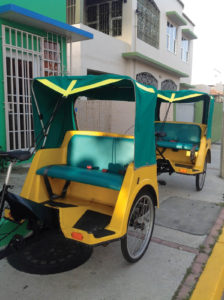
Photo 5
“Measure twice, cut once” is an adage learned from a dear friend, and it is one worth repeating constantly. Also, be sure to attend MFA workshops, which provide valuable information on workflow for small, medium and large shops so that your projects can be estimated, fabricated and installed to everyone’s satisfaction. Even one new tip will grow your skills and make becoming a Master Fabric Craftsman one of your next goals.
Perhaps you will be reading this in Oakland, Calif., at the 2015 MFA National Convention. If not, make plans to attend in 2016, because the experience will bring to your business an expansion of craftsmanship, camaraderie and proficiency.
Please feel free to write or call to let me know any questions or concerns you have or would like to know more about in future articles as we welcome another year of adventure and honing our skills as marine fabricators.
 TEXTILES.ORG
TEXTILES.ORG 


